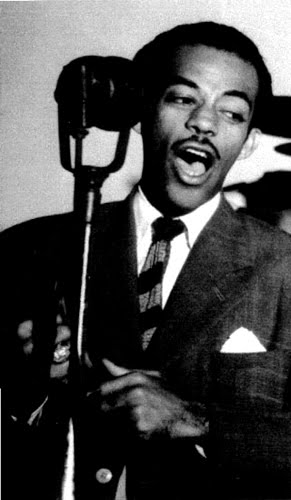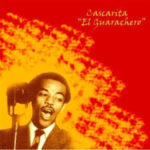 ORLANDO GUERRA “CASCARITA”, POPULAR Y “GUAPACHOSO” CANTANTE CUBANO. (Nacido en Camaguey).
ORLANDO GUERRA “CASCARITA”, POPULAR Y “GUAPACHOSO” CANTANTE CUBANO. (Nacido en Camaguey).
Orlando Guerra fue un popular cantante cubano, más conocido por su apodo de “Cascarita” y por su manera de interpretar las canciones.
Guerra nació el 14 de septiembre de 1920 en Camagüey, la tercera ciudad más grande de Cuba y la capital de la provincia de Camagüey. Guerra inició su carrera profesional en su natal Camagüey y La Habana a principios de la década de 1940, e hizo su nombre cantando en grandes bandas exitosas.
En 1942 se incorporó a la Orquesta de los Hermanos Palau. El mismo año grabó con la Orquesta Siboney de Pepito Torres en Puerto Rico, y en 1943 él y varios otros miembros de la Palau, encabezados por Julio Cueva, fundaron una nueva big band con los arreglos del pianista René Hernández.
Un año después pasó a la orquesta Casino de la Playa, donde su fama creció aún más, que hasta los discos de la RCA-Víctor (como señala el maestro Díaz Ayala) que comenzaron diciendo ‘Orquesta Casino de la Playa, cantante Cascarita’, después decían: ‘Cascarita acompañado por la Orquesta Casino de la Playa’.
Gracias a sus recomendaciones el innovador y estupendo arreglista Dámaso Pérez Prado entra también a esta orquesta (de donde sale para lanzar al mundo su mambo). Cuenta el enciclopédico amigo Rosendo Rosell que el sobrenombre de Cascarita le viene estando como de costumbre por la madrugada después de una función abundaban alrededor de los clubes de La Habana y permanecían toda la noche abiertos, al quejarse el cantante que dentro de su pan, lo que habían puesto eran “cascaritas” de jamón y queso.
Grabó con numerosas orquestas, además de las citadas, entre ellas la de su amigo Pérez Prado, la de Orestes Santos, la de Bebo Valdés, Pepito Torres y Memo Salamanca. En todas sus semblanzas se señala que “fue un cantante precursor que, junto a Miguelito Valdés, trazó un camino del que luego aprendieron cantantes posteriores.
https://youtu.be/oydOI3s0jHE
El acucioso investigador Dr. Cristóbal Díaz Ayala nos ha relatado que Cascarita estaba muy influenciado por los blues y el swing norteamericano y sus grabaciones con La Orquesta Casino de la Playa así lo demuestran.
Guerra grabó decenas de canciones. Algunos de sus grandes éxitos fueron “El baile del sillón”, “El caballo y la montura”, “Estoy acabando”, “Llora timbero”, “La ola marina”, “La pelotica”, “Piru, piru, pirulí” “Se murió Panchita”, “Ta ‘bueno ya”, “La última noche” y “Uampampiro”, entre otros.
https://youtu.be/TmyGdxBPfAE
Con el advenimiento de jóvenes cantantes exitosos como Benny Moré, Cascarita perdió gran parte de su popularidad, por lo que se trasladó a México. Allí se unió a la orquesta del pianista Memo Salamanca. Murió el 20 de marzo de 1973 en la Ciudad de México a la edad de 55 años. Sin embargo, existen informes contradictorios sobre su muerte. Según Juan José Reinosa murió en Panamá, mientras que Helio Orovio sostiene que murió en México en 1975.
En agosto de 2008, el escritor mexicano Arturo Yáñez declaró que murió en 1971 y que sus restos pueden encontrarse en el Panteón San Lorenzo en Tlaxcolco, México.
 ORLANDO GUERRA “CASCARITA”, POPULAR AND “GUAPACHOSO” CUBAN SINGER. (Born in Camaguey).
ORLANDO GUERRA “CASCARITA”, POPULAR AND “GUAPACHOSO” CUBAN SINGER. (Born in Camaguey).
Orlando Guerra was a popular Cuban singer, best known by his nickname “Cascarita” and by his way of interpreting the songs.
Guerra was born on September 14, 1920, in Camagüey, the third-largest city in Cuba and the capital of the province of Camagüey. Guerra began his professional career in his native Camagüey and Havana in the early 1940s and made his name by singing in successful big bands.
In 1942 he joined the Hermanos Palau Orchestra. The same year he recorded with the Pepito Torres Siboney Orchestra in Puerto Rico, and in 1943 he and several other members of the Palau, led by Julio Cueva, founded a new big band with the arrangements of the pianist René Hernández.
A year later he went to the Casino de la Playa orchestra, where his fame grew even more than even the RCA-Víctor records (as maestro Díaz Ayala points out) that began by saying ‘Orquesta Casino de la Playa, singer Cascarita’, then they said: ‘Cascarita accompanied by the Casino de la Playa Orchestra’.
Thanks to his recommendations, the innovative and stupendous arranger Dámaso Pérez Prado also enters this orchestra (from where he leaves to launch his mambo into the world). The encyclopedic friend Rosendo Rosell tells that the nickname of Cascarita comes to him as usual in the early morning after a performance, they abounded around the clubs in Havana and stayed open all night, when the singer complained that inside his bread, they had put was “cascaritas” of ham and cheese.
He recorded with numerous orchestras, in addition to those mentioned, including that of his friend Pérez Prado, that of Orestes Santos, that of Bebo Valdés, Pepito Torres and Memo Salamanca. In all his portraits, it is pointed out that “he was a precursor singer who, together with Miguelito Valdés, traced a path from which later singers later learned.
The diligent researcher Dr. Cristóbal Díaz Ayala has related to us that Cascarita was very influenced by blues and the North American swing and his recordings with La Orquesta Casino de la Playa demonstrate this.
Guerra recorded dozens of songs. Some of his greatest hits were “The armchair dance”, “The horse and the saddle”, “I am finishing”, “Llora timbero”, “La ola marina”, “La pelotica”, “Piru, piru, pirulí” ” Panchita died ”,“ Ta ‘good already ”,“ The last night ”and“ Uampampiro ”, among others.
With the advent of successful young singers like Benny Moré, Cascarita lost much of his popularity, so he moved to Mexico. There he joined the pianist Memo Salamanca’s orchestra. He died on March 20, 1973, in Mexico City at the age of 55. However, there are conflicting reports of his death. According to Juan José Reinosa he died in Panama, while Helio Orovio maintains that he died in Mexico in 1975.
In August 2008, the Mexican writer Arturo Yáñez stated that he died in 1971 and that his remains can be found in the San Lorenzo Pantheon in Tlaxcolco, Mexico.
Agencies/ Wiki/ María A. Vizcaino/ Internet Photos/ YouTube/ Arnoldo Varona/ www.TheCubanHistory.com
THE CUBAN HISTORY, HOLLYWOOD.








